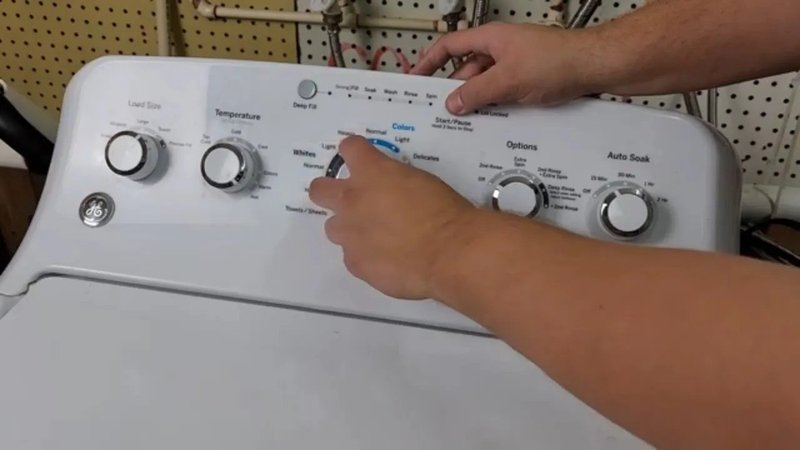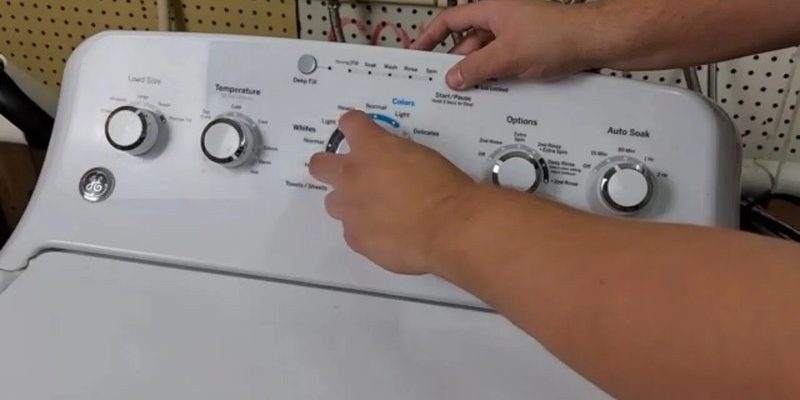
Now, you might be asking yourself, “Can I just reset the machine to fix this issue?” It’s a common question, and a reasonable one at that. After all, resetting our devices often seems like a magical solution to various technical woes. But before we jump into conclusions, let’s take a closer look at what the “OE” error really means, whether hitting that reset button will do the trick, and the steps you can take to get your washing machine back in tip-top shape.
Understanding the “OE” Error Code
The “OE” error code is like your washing machine’s way of waving a little flag and saying, “Hey, something’s not quite right here!” Specifically, it indicates that the machine is having trouble draining out the water. This could be due to several underlying reasons, such as a blocked drain hose, a kink in the hose, or even a malfunctioning drain pump. Think of the drainage system in your washing machine as similar to the plumbing in your house; just like a clogged drain can cause water to back up in your sink, an issue with your washer’s drainage can prevent it from working properly.
So, why is drainage so important? Well, during a wash cycle, the machine fills up with water to clean your clothes. Once the cycle is complete, the water needs to be pumped out to make way for fresh water or to allow the clothes to be spun dry. If something is amiss with this process, the machine can’t function as intended, and you’ll end up with soggy, half-washed clothes. Checking for any visible obstructions or kinks in the drain hose can be a good first step in troubleshooting.
Another cause of the “OE” error could be a faulty drain pump. This component is like the heart of the drainage system, responsible for pushing water out of the machine. If the pump fails, water can’t be expelled, resulting in the dreaded error code. It’s like trying to drink through a straw that has a hole—no matter how hard you try, not much liquid is going to get through. Investigating these potential issues can help you decide whether a simple reset is enough or if more intricate troubleshooting is needed.
Could a Simple Reset Be the Solution?
Here’s the deal: resetting your washing machine is like giving it a quick mental refresh. It’s akin to rebooting your computer to resolve minor glitches or errors. However, while a reset might temporarily clear the error message, it’s not a guaranteed fix for all underlying issues. It’s more of a band-aid solution if there happens to be a minor software glitch causing the error code to pop up.
To perform a reset, you often need to unplug the washing machine, wait for a few minutes, and then plug it back in. This process can sometimes clear error codes if they are caused by temporary issues, much like restarting your smartphone can fix a momentary freeze. However, it’s important to recognize that if the “OE” error is caused by physical blockages or a faulty pump, a reset might not be a long-term solution.
If the error reappears after resetting, it’s a signal that further investigation is necessary. It might be time to roll up your sleeves and check if there’s a sock causing a blockage in the hose or if the drain pump needs attention. And if you’re not comfortable with DIY repairs, this might be the point where calling in a professional could save you time and stress.
Taking Action: What to Do Next
Once you’ve determined that a reset hasn’t resolved the issue, it’s time to dig a little deeper. Before you do, make sure the washing machine is unplugged for safety. Then, inspect the drain hose to see if it’s twisted or clogged. Sometimes, lint or small fabric particles can accumulate and obstruct water flow. Like cleaning out a vacuum cleaner filter, giving your drain hose a thorough check can often reveal the source of the problem.
If you don’t find any issues with the hose, the next step might be to examine the drain pump. Remember, this pump is crucial for moving water out of the washer. If it’s damaged or worn out, it might need replacing. Think of it like replacing a worn-out tire on your car; the machine simply can’t run smoothly without it. For those not adept at appliance repair, consulting a professional might be the safest route, ensuring that the job is done correctly without risk of further damage.
In some cases, persistent error codes might indicate the need for professional maintenance or even parts replacement. While this might seem daunting, addressing the problem promptly can prevent bigger issues down the road. Regular maintenance, such as cleaning the lint trap and ensuring the hoses are in good condition, can also help prevent future occurrences of the “OE” error code.
Preventing Future “OE” Errors
To keep your washing machine running smoothly and prevent the recurrence of the “OE” error, regular maintenance is key. Think of it like taking care of a car—it requires regular check-ups to stay in top condition. Start by routinely inspecting the drain hose and pump for any signs of wear or blockage. It might also help to occasionally run an empty wash cycle with hot water and vinegar to clear any build-up inside the machine.
Ensure that you’re not overloading the washing machine, as this can strain its components and lead to drainage problems. Just like trying to carry too many groceries at once can cause you to drop bags, overloading your washer can result in poor performance and potential errors. Stick to the recommended load size, and your machine will thank you for it.
Finally, the use of the right detergent in the proper quantities ensures the machine doesn’t build up excess soap, which can contribute to blockages. By taking these steps, you not only extend the life of your washing machine but also enjoy hassle-free laundry days. So, the next time your washer seems to be acting up, you’ll know just what to do!
